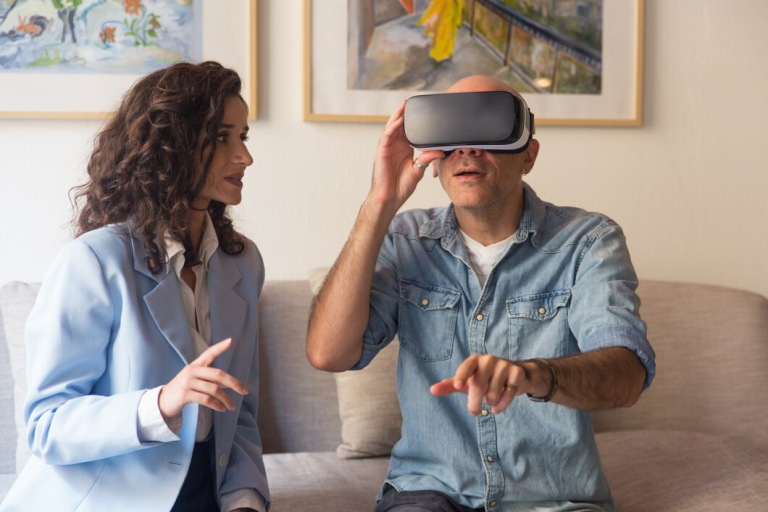In the construction industry, errors and rework can lead to significant delays and increased costs. Virtual Reality (VR) offers a cutting-edge solution to these common issues by allowing architects, builders, and clients to visualize and interact with a project before construction begins.
How VR Minimizes Errors in Construction
- Real-Time Visualization:
VR enables all stakeholders to walk through a fully immersive 3D model of the design. This realistic walkthrough helps identify potential design flaws or conflicts early on. Architects and clients can explore every room, nook, and corner, ensuring that the project aligns perfectly with the client’s vision. - Improved Communication:
Misunderstandings between clients, architects, and contractors often result in errors during construction. With VR, everyone can see the exact same model, eliminating discrepancies in understanding the design. VRchitects provides detailed virtual tours that facilitate better communication and reduce the likelihood of costly rework. - Pre-Construction Testing:
Virtual Reality allows for virtual testing of construction elements like layouts, material selections, and lighting conditions. VRchitects offers simulations where clients and architects can test different design elements, confirming choices before any physical construction occurs. This pre-construction testing ensures that any issues are addressed in the design phase, not on-site, where changes can be more expensive. - Enhanced Decision-Making:
VR empowers clients to make informed decisions by offering a realistic preview of the final outcome. This preview reduces the risk of post-construction changes, saving time and resources.
Reducing Rework with VRchitects
Rework often stems from errors detected too late in the construction process. VRchitects’ immersive 3D models help detect potential problems early, significantly reducing the chances of rework. By providing clients with a virtual experience of their project, modifications can be made digitally before any physical work starts. This approach leads to more efficient project management and a smoother construction process overall.
The Future of Construction with VR
The integration of VR in construction is transforming how projects are executed, resulting in fewer errors and higher client satisfaction. As the technology continues to evolve, VR will become an essential tool in construction, making the process more efficient and cost-effective.
Conclusion
VR is revolutionizing the construction industry by reducing errors and minimizing rework. VRchitects leverages this technology to ensure projects are executed flawlessly, saving clients time and money. By using VR to visualize designs, communicate effectively, and test various aspects of a project, construction becomes more predictable and less prone to costly mistakes.
Ready to experience how VR can improve your construction project? Contact VRchitects today to explore our virtual design solutions.






